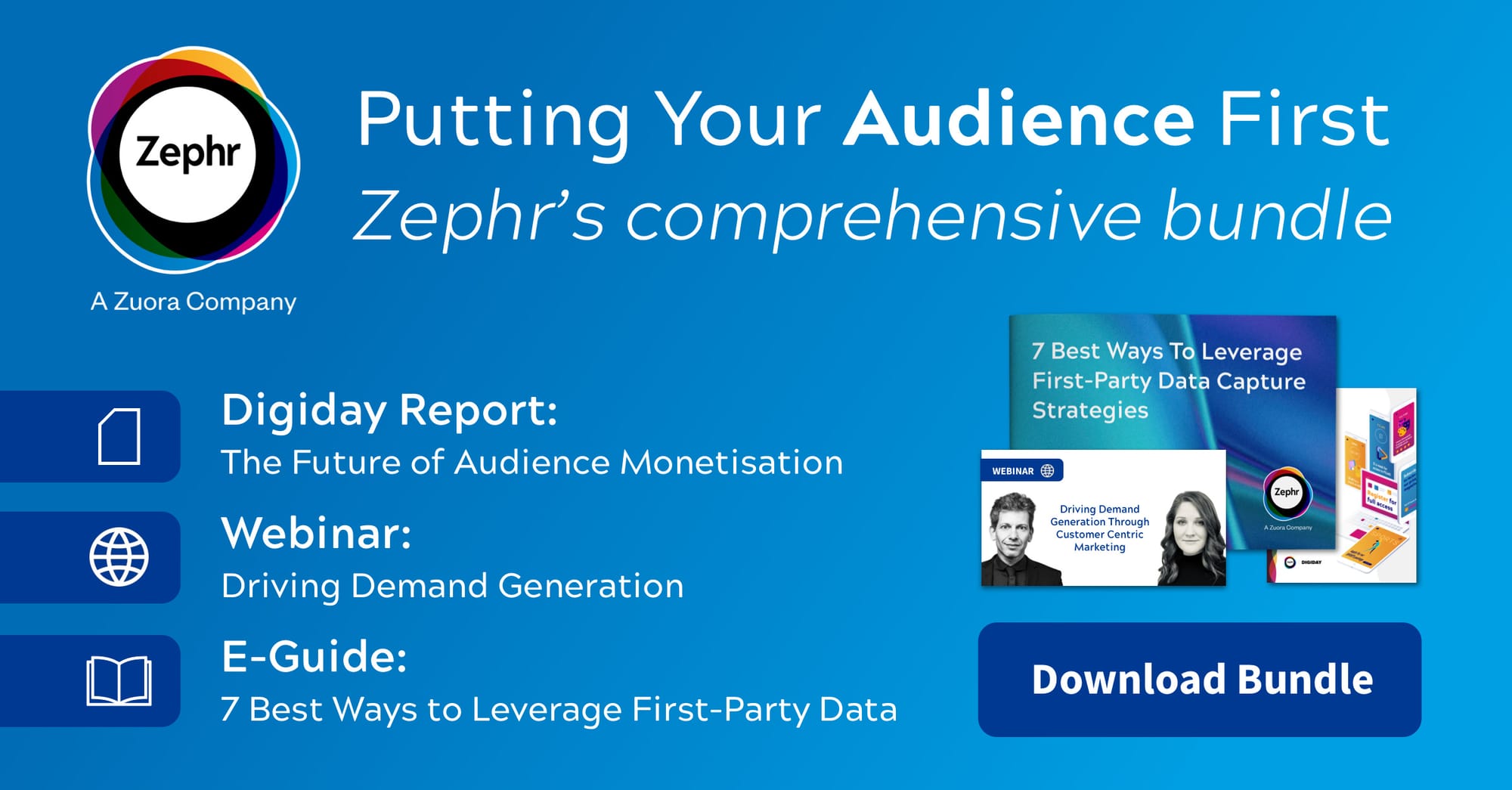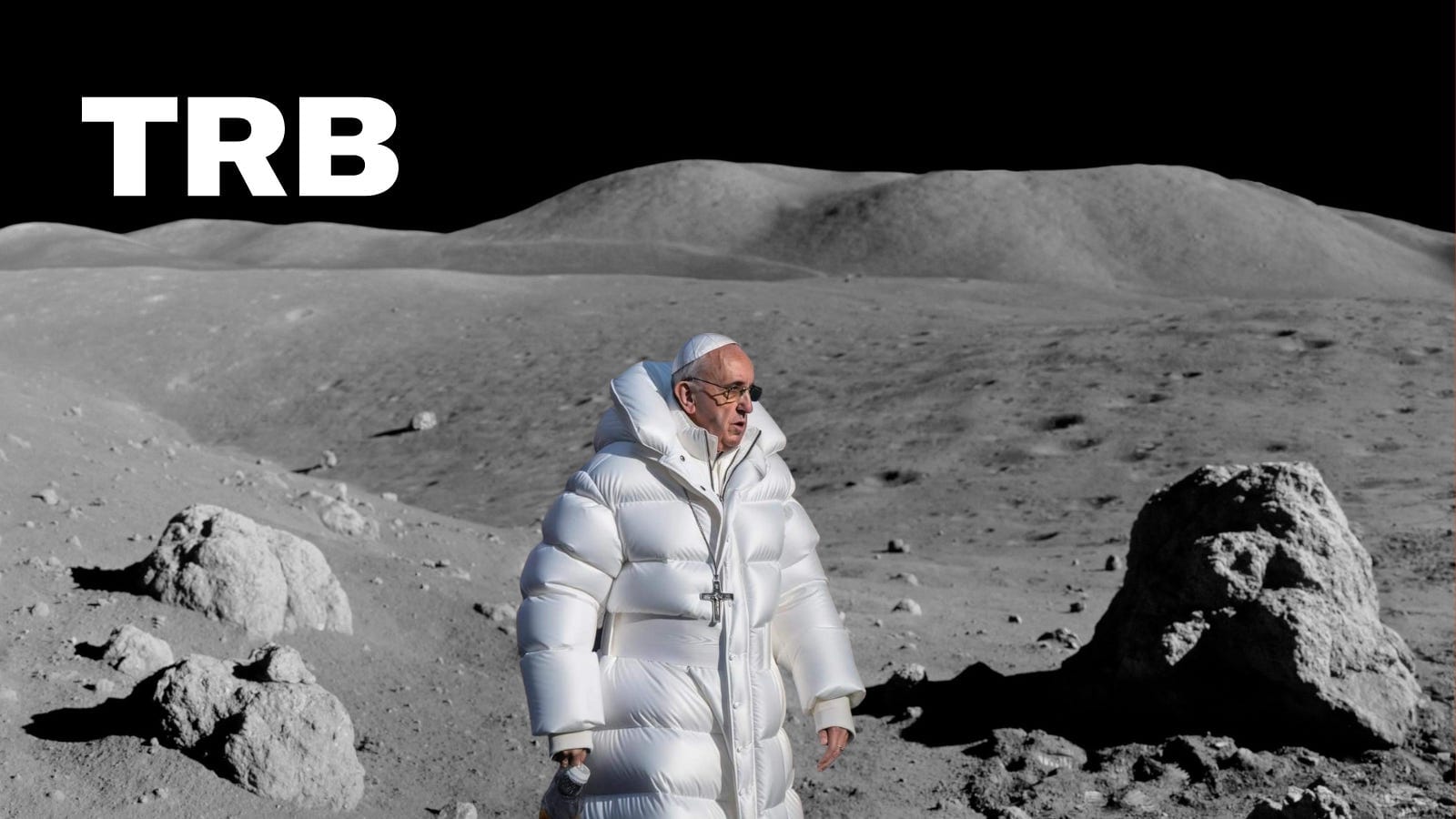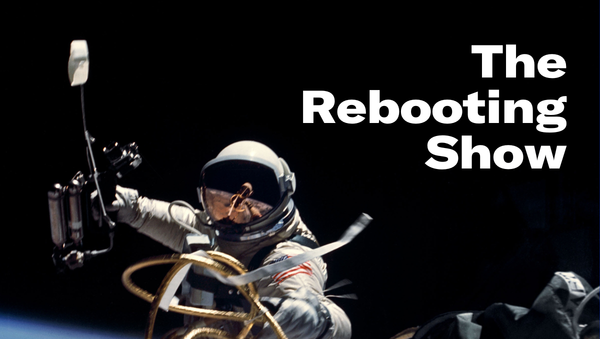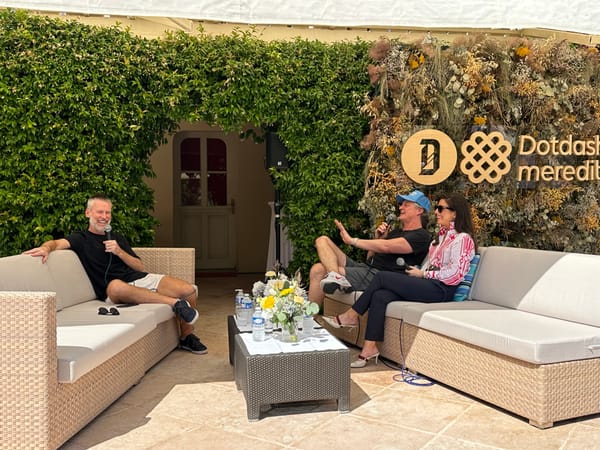Media's small-ball era
Substack meets Masterclass meets....
Personally, I don’t think The Hundred is that bad of an idea. It has a better shot than Vaulter. Also, part 2 of my conversation with Workweek’s Adam Ryan, and AI-induced insanity. Send me a note with feedback by hitting reply. Thanks to Zephr and Impact.com for sponsoring.


In Zephr’s first content bundle of 2023, we put together some of our most in-demand content about all things audience-focused. Our “putting audiences first” content bundle will provide you with everything you need to implement successful audience-first strategies that actually drive community, subscriber satisfaction, and retention. Download free today and gain access to:
- The Future of Monetization” report produced in partnership with Digiday
- Driving Demand Generation webinar with guest speakers ex-editor of Wired David Rowan, and Katrina Broster, performance director at Dennis Publishing
- Zephr’s “7 Best Ways to Leverage Third Party Data '' guide.
Media’s small-ball era
Like Mad Men, Succession is a love letter to the heyday of an industry that’s best days are behind it. Advertising had lost so much of its glamor by the time Mad Men debuted in 2007 that the creators had no choice but to set the show in the 1960s, the time of the cliched three-martini lunch and when advertising shaped culture..
Succession has a similar nostalgic vibe, particularly in Sunday’s debut episode of its final season. The Roy children are gathered in a sprawling Los Angeles home to spitball The Hundred, a “high-visibility, execution-dependent disruptor news brand”that Kendall describes as “Substack meets Masterclass meets The Economist meets The New Yorker.” Kendall likes to style himself a new media innovator, even after his disastrous experience with Vaulter and GoJo.
Kendall’s buzzword blather is an ideal send up of the bullshit peddled by new digital media startups to flatter ego-driven investors with its plans to remake a “broken” industry. The Hundred brief for the agency is a work of art: "The world's leading experts provide humanity's most invaluable knowledge in in bespoke bite-sized parcels, designed to improve the lives of subscribers and the world in general. The antidote to the modern malaise of empty-caloried input-overload." There’s a good chance Galloway is involved.
What made the scene was how even the clueless Roy kids recognized how small it all was. It’s no surprise they quickly jettison the grubby work of building a news publication from scratch in favor of an M&A deal to acquire the legacy media assets of Pierce.
After all, the internet has proven that digital media brands are ephemeral. Instead, they turn to the dealmaking of yesteryear, with private jets and high-stakes and arbitrary “price discovery” driven more by vibes than EBITDA multiples. The old media represented by ATN is past its prime, but with pretenders like GoJo and The Hundreds, you can forgive Logan for his dismissiveness.
The era of media moguls – Ted Turner, Sumner Redstone, Rupert Murdoch, Barry Diller – have literally exited or soon will. Needless to say, digital media has hardly produced a set of swashbucklers to take their place. A veteran agency exec once remarked to me, in Cannes no less, how the real powerbrokers were in Silicon Valley and “all have wires coming out of the back of their heads.” In the AI era, the power balance is unlikely to shift, not when most media brands will be relegated to the status of plug-in.
The hangover from the zero-interest rate era will likely result not in more consolidation but in unwinding of the haphazard, half-executed rollups that never quite got going – and now lack a market that has appetite or belief in the endeavor. “In the internet age, everything is so easily substitutable,” laments Jon Miller. As Bustle’s Bryan Goldberg points out, many combinations – Vice-Refinery is his example – lacked much strategic rationale beyond “synergy.” BuzzFeed’s rollup plan was taken to the markets (Logan’s favorite) and the verdict is clear: BuzzFeed’s stock is down 90%. If combining assets doesn’t create more value, the obvious alternative is to pull them apart, as I discussed with Insider’s Claire Atkinson on The Rebooting Show.
The sensible pivot to focus on what makes a brand unique and indispensable is, of course, sensible, even if it lacks the elan of dealmaking and empire building that make for great stories, if not these days great businesses.

How does your branded content measure up?
From January to December 2022, Pressboard by impact.com analyzed over 11,744 pieces of branded content from 465 publications, read by more than 100 million people. Use Pressboard’s 2022 benchmark report to understand how sponsored content campaigns performed across the industry, and formulate benchmarks of your own. Discover metrics such as conversion rates, articles read by month, and average reads per story. Get the report.
“Empower creatives to do what they do best”
Adam Ryan is the CEO of Workweek, a B2B media company based around creators. Adam used to be the president of The Hustle and writes the Perpetual newsletter that covers the media business from the lens of an operator. Check out Part 1.
BM: You make a great point about it being very top heavy. I am a bit of a skeptic that there will be a broad middle class of “creators” in a world where Substack aims to be more like YouTube. There’s an obvious power law that happens with every network. Substack is a great place for a side hustle or to incubate a publishing brand. At that point, the decision is whether you move off and control your future or hitch your wagon to Substack like The Free Press is doing. It comes down to what kind of business you want to build.
But enough about Substack, let’s talk about the institutional-individual continuum. Workweek is somewhere on that continuum. The typical publication flattens everything: personality, viewpoint, everything. Do you think it’s important to have a measure of consistency in the actual content you’re producing across these different verticals? Why not have all your marketing writers under one brand instead of five?
AR: Incubation for a media company on Substack is very smart — would recommend that for anyone trying to get started. “The typical publication flattens everything: personality, viewpoint, everything" is the problem of our industry. It is the outcome of outdated business models and bad incentives. Empower the creatives to do what they do best: be creative. And ensure you can keep them for a very long time. To attract and retain the best talent you have to make those folks happy (not easy!).
A fundamental belief of Workweek is that creative talents really only want three things to be happy:
- Fair compensation (if they drive success, they want to get paid for it)
- Creative freedom (nobody wants their voice or opinions filtered out)
- Growth (both audience and professional opportunities)
Publications basically suck at all of these because their models (margins/lack of economies of scale) and systems (layers of management/editors) don't allow for creatives to achieve these three things.
Does it matter about the consistency of the brand if the product is great? Of course not. In media, the company with the most engaged audience has the best chance to win.
Our newest creator, Gabrielle, is a massive fan of the Lakers and believes she runs the best 1:1 meetings for sales people. Her brand, The One on One, looks and feels like her. The content looks and feels like the brand. Same with our HR creator (who in five months got to 95,000 subscribers and a 65% unique open rate). She wanted to create the burn book of HR. This process is scalable and repeatable.
From a business perspective, we believe this is not only more rewarding for creatives but it comes with better organic growth, better sell-through rates, and ultimately a much healthier media company than an institutional brand.
Recommendations

The coming AI insanity: The “drip Pope” is a warning of what’s to come with AI-generated media, particularly strikingly realistic synthetic images. This will accelerate the erosion of a trust, setting up the real AI threat: it will drive us insane, particularly as people use these new tools to distance themselves even more from reality.
For publishers, AI’s advances threaten many hustles deployed around search optimization. A “post-search internet” has profound implications for anyone making content. When tech people “remove friction,” they tend to also remove someone’s margin.
Publishers spinning out tech has a bad track record, but Axios is making a go of its corporate writing tool. When I saw Axios HQ raised $20 million at a $100 million post-money valuation, I couldn’t help but notice that it is now billed as “using AI.” Couldn’t have hurt.
Bad news is addictive: The tendency to focus on the negative isn’t unique to journalists, it’s part of the human condition. Everything is terrible, everywhere, all at once.
Tuning up your commerce content doesn’t have to be complicated. Learn how to amplify your commerce content with data aggregation and automation. Download the infographic from Impact.com. (Sponsored)
If you’re looking to reach 14,500 publishing professionals, you should consider sponsoring The Rebooting to showcase your expertise in finding paths forward for building sustainable media businesses. Check out the sales kit and get in touch: brian@therebooting.com.




